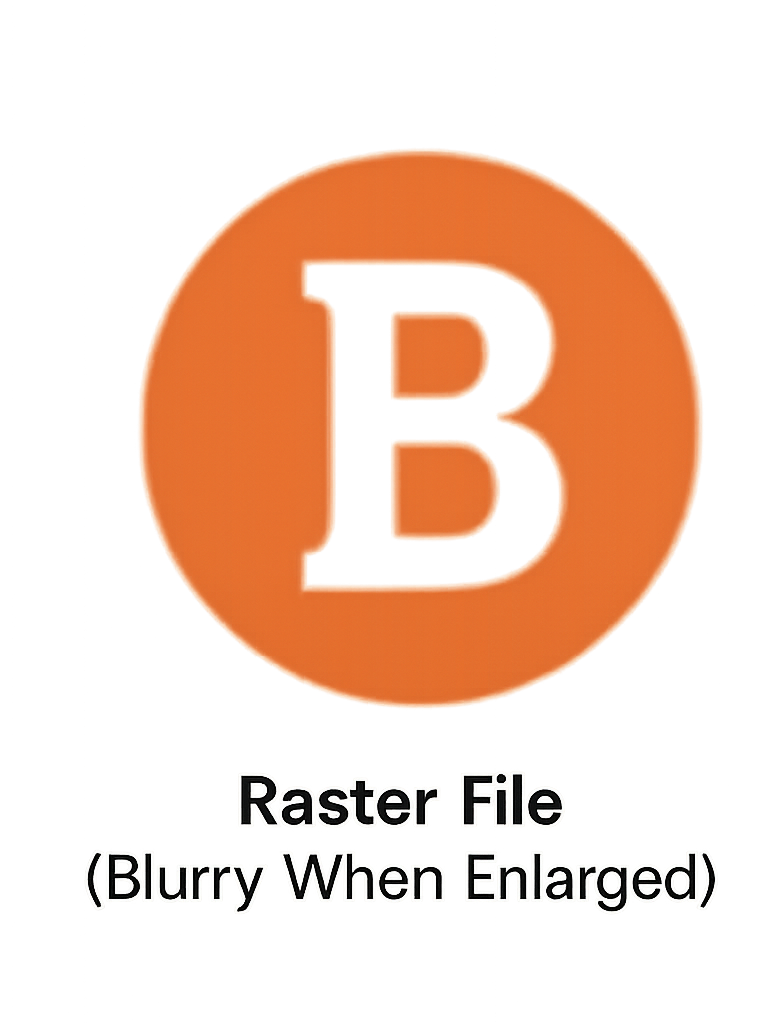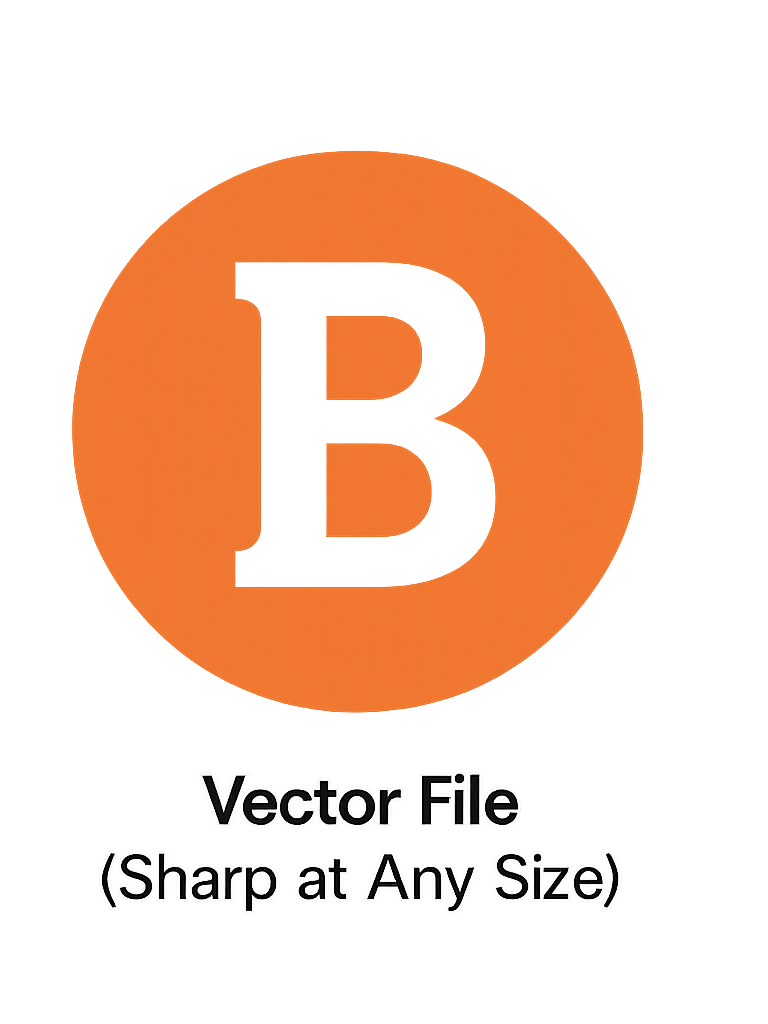Vector Files for Printing
Vector files are the standard for professional printing because they are scalable and editable without losing quality. Printers prefer them for screen printing, DTF, DTG, UV, and sublimation since they produce the sharpest results.
- Vector vs raster files: what’s the difference?
- Most common formats: AI, EPS, SVG, PDF
- Why vector art ensures cleaner, sharper prints
What is a Vector File?
Unlike raster images (JPG, PNG), which are made of pixels, vector files use mathematical paths to define shapes, text, and colors. This makes them resolution independent meaning they stay sharp whether on a business card or a billboard.
 Raster File (Blurry When Enlarged)
Raster File (Blurry When Enlarged)
 Vector File (Sharp at Any Size)
Vector File (Sharp at Any Size)
Common Vector File Types
- AI (Adobe Illustrator): Native Illustrator format; editable and widely used in design studios.
- EPS: A universal format, easily shared with printers and vinyl cutters.
- SVG: Scalable and web-friendly; ideal for digital and print crossover use.
- PDF: Often vector-based when exported correctly; check settings before sending to print.
Comparison: Vector vs Raster
| Feature | Vector Files | Raster Files |
|---|---|---|
| Scalability | Infinite (sharp at any size) | Resolution-limited; pixelates when enlarged |
| Best Use | Logos, text, line art, print-ready designs | Photos, gradients, detailed imagery |
| Editability | Fully editable shapes, colors, and paths | Limited; edits degrade quality |
| Preferred For | Screen printing, DTF, DTG, sublimation | Photo printing, digital use |
Need Help Converting Artwork?
If your logo is a blurry JPG or PNG, we can convert it into clean vector art that’s ready for printing and embroidery. This ensures your brand looks sharp on every product. Request a quote or see vector samples.